Search Constraints
You searched for:
On-site Access Accessible by appointment in the Study Room
Remove constraint On-site Access: Accessible by appointment in the Study RoomSearch Results
2001. Kourayim
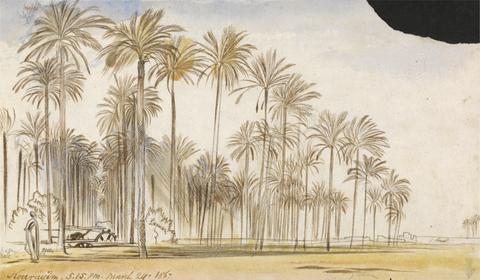
- Date:
- 1867
- Materials & Techniques:
- Watercolor, graphite, pen and brown ink on medium, slightly textured, cream wove paper
- Dimensions:
- Sheet: 5 1/4 x 9 inches (13.3 x 22.9 cm)
- Collection:
- Prints and Drawings
- Credit Line:
- Yale Center for British Art, Gift of Donald C. Gallup, Yale BA 1934, PhD 1939
2002. Salahiyeh

- Date:
- 1867
- Materials & Techniques:
- Watercolor, graphite, pen and brown ink on thick, rough, cream wove paper
- Dimensions:
- Sheet: 2 1/2 x 9 7/8 inches (6.4 x 25.1 cm)
- Collection:
- Prints and Drawings
- Credit Line:
- Yale Center for British Art, Gift of Donald C. Gallup, Yale BA 1934, PhD 1939
2003. Kurayim

- Date:
- 1867
- Materials & Techniques:
- Watercolor, graphite, pen and brown ink on medium, slightly textured, wove paper, mounted on moderately thick, moderately textured, cream wove paper
- Dimensions:
- Sheet: 2 1/2 x 9 inches (6.3 x 22.9 cm)
- Collection:
- Prints and Drawings
- Credit Line:
- Yale Center for British Art, Gift of Donald C. Gallup, Yale BA 1934, PhD 1939
2004. Salahiyeh
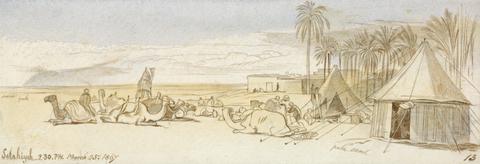
- Date:
- 1867
- Materials & Techniques:
- Watercolor, graphite, pen and brown ink on thick, rough, cream wove paper
- Dimensions:
- Sheet: 3 7/16 x 9 7/8 inches (8.7 x 25.1 cm)
- Collection:
- Prints and Drawings
- Credit Line:
- Yale Center for British Art, Gift of Donald C. Gallup, Yale BA 1934, PhD 1939
2005. Camels
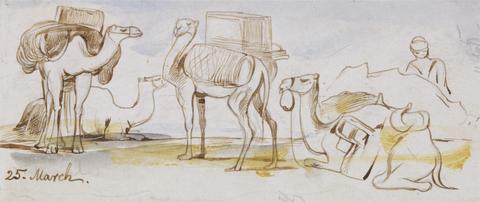
- Date:
- 1867
- Materials & Techniques:
- Watercolor, graphite, pen and brown ink on medium, slightly textured, cream wove paper
- Dimensions:
- Sheet: 2 x 4 5/8 inches (5.1 x 11.7 cm)
- Collection:
- Prints and Drawings
- Credit Line:
- Yale Center for British Art, Gift of Donald C. Gallup, Yale BA 1934, PhD 1939
2006. Salahiyeh
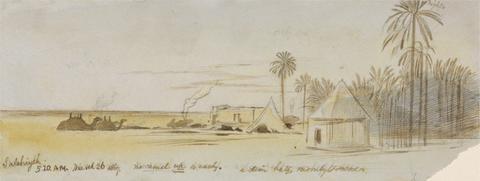
- Date:
- 1867
- Materials & Techniques:
- Watercolor, graphite, pen and brown ink on medium, slightly textured, blue wove paper, mounted on thick, moderately textured, cream wove paper
- Dimensions:
- Sheet: 3 7/16 x 9 inches (8.7 x 22.9 cm)
- Collection:
- Prints and Drawings
- Credit Line:
- Yale Center for British Art, Gift of Donald C. Gallup, Yale BA 1934, PhD 1939
2007. Salahiyeh

- Date:
- 1867
- Materials & Techniques:
- Watercolor, graphite, pen and brown ink on medium, slightly textured, blue wove paper
- Dimensions:
- Sheet: 2 1/4 x 9 inches (5.7 x 22.9 cm)
- Collection:
- Prints and Drawings
- Credit Line:
- Yale Center for British Art, Gift of Donald C. Gallup, Yale BA 1934, PhD 1939
2008. Near Beer El Abt
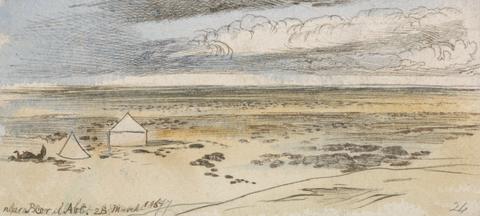
- Date:
- 1867
- Materials & Techniques:
- Watercolor, graphite, pen and brown ink on thick, rough, beige wove paper
- Dimensions:
- Sheet: 2 3/8 x 5 1/4 inches (6 x 13.3 cm)
- Collection:
- Prints and Drawings
- Credit Line:
- Yale Center for British Art, Gift of Donald C. Gallup, Yale BA 1934, PhD 1939
2009. Between Bir El Abt

- Date:
- 1867
- Materials & Techniques:
- Watercolor, graphite, pen and brown ink on moderately thick, slightly textured, blue wove paper
- Dimensions:
- Sheet: 5 1/2 x 9 inches (14 x 22.9 cm)
- Collection:
- Prints and Drawings
- Credit Line:
- Yale Center for British Art, Gift of Donald C. Gallup, Yale BA 1934, PhD 1939
2010. Salahiyeh
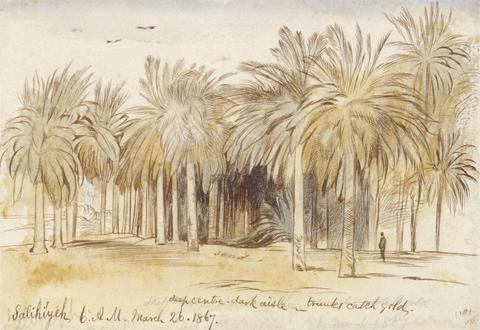
- Date:
- 1867
- Materials & Techniques:
- Watercolor, graphite, pen and brown ink on thick, slightly textured, beige wove paper
- Dimensions:
- Sheet: 4 3/8 x 6 5/16 inches (11.1 x 16 cm)
- Collection:
- Prints and Drawings
- Credit Line:
- Yale Center for British Art, Gift of Donald C. Gallup, Yale BA 1934, PhD 1939
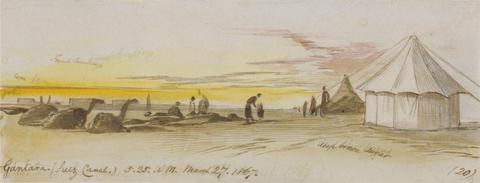
- Date:
- 1867
- Materials & Techniques:
- Watercolor, pen and brown ink, and graphite on medium, slightly textured, blue wove paper
- Dimensions:
- Sheet: 3 1/2 × 9 inches (8.9 × 22.9 cm)
- Collection:
- Prints and Drawings
- Credit Line:
- Yale Center for British Art, Gift of Donald C. Gallup, Yale BA 1934, PhD 1939

- Date:
- 1867
- Materials & Techniques:
- Watercolor, pen and brown ink, and graphite on thick, rough, cream wove paper
- Dimensions:
- Sheet: 4 3/4 × 9 7/8 inches (12.1 × 25.1 cm)
- Collection:
- Prints and Drawings
- Credit Line:
- Yale Center for British Art, Gift of Donald C. Gallup, Yale BA 1934, PhD 1939

- Date:
- 1867
- Materials & Techniques:
- Watercolor, pen and brown ink, and graphite on thick, rough, cream wove paper
- Dimensions:
- Sheet: 3 1/4 × 9 7/8 inches (8.3 × 25.1 cm)
- Collection:
- Prints and Drawings
- Credit Line:
- Yale Center for British Art, Gift of Donald C. Gallup, Yale BA 1934, PhD 1939

- Date:
- 1867
- Materials & Techniques:
- Watercolor, pen and gray ink, and graphite on medium, slightly textured, gray wove paper
- Dimensions:
- Sheet: 3 1/8 x 9 inches (7.9 x 22.9 cm)
- Collection:
- Prints and Drawings
- Credit Line:
- Yale Center for British Art, Gift of Donald C. Gallup, Yale BA 1934, PhD 1939
2015. El Areesh

- Date:
- 1867
- Materials & Techniques:
- Watercolor, graphite, pen and brown ink on medium, slightly textured, cream wove paper
- Dimensions:
- Sheet: 2 1/16 x 4 11/16 inches (5.2 x 11.9 cm)
- Collection:
- Prints and Drawings
- Credit Line:
- Yale Center for British Art, Gift of Donald C. Gallup, Yale BA 1934, PhD 1939
2016. El Areesh
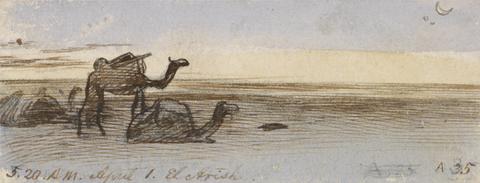
- Date:
- 1867
- Materials & Techniques:
- Watercolor, graphite, pen and brown ink on moderately thick, slightly textured, beige wove paper
- Dimensions:
- Sheet: 1 3/4 x 4 1/2 inches (4.4 x 11.4 cm)
- Collection:
- Prints and Drawings
- Credit Line:
- Yale Center for British Art, Gift of Donald C. Gallup, Yale BA 1934, PhD 1939

- Date:
- 1867
- Materials & Techniques:
- Watercolor, graphite, pen and black ink on moderately thick, slightly textured, blue wove paper
- Dimensions:
- Sheet: 2 9/16 x 8 15/16 inches (6.5 x 22.7 cm)
- Collection:
- Prints and Drawings
- Credit Line:
- Yale Center for British Art, Gift of Donald C. Gallup, Yale BA 1934, PhD 1939
2018. Near Khan Yunas
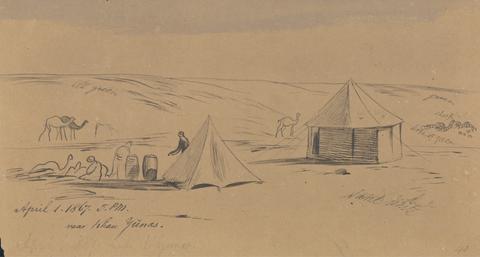
- Date:
- 1867
- Materials & Techniques:
- Watercolor, graphite, pen and black ink on medium, slightly textured, brown wove paper
- Dimensions:
- Sheet: 4 3/4 x 8 7/8 inches (12.1 x 22.5 cm)
- Collection:
- Prints and Drawings
- Credit Line:
- Yale Center for British Art, Gift of Donald C. Gallup, Yale BA 1934, PhD 1939
2019. Ramle
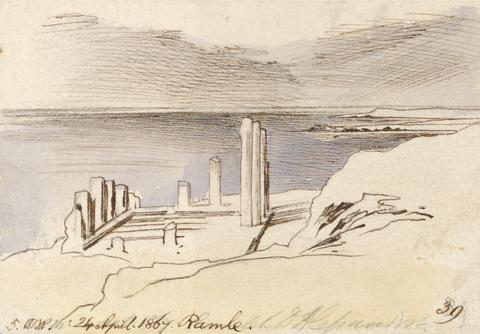
- Date:
- 1867
- Materials & Techniques:
- Watercolor, graphite, pen and brown ink on thick, rough, cream wove paper
- Dimensions:
- Sheet: 3 1/2 x 4 15/16 inches (8.9 x 12.5 cm)
- Collection:
- Prints and Drawings
- Credit Line:
- Yale Center for British Art, Gift of Donald C. Gallup, Yale BA 1934, PhD 1939
2020. San Marino
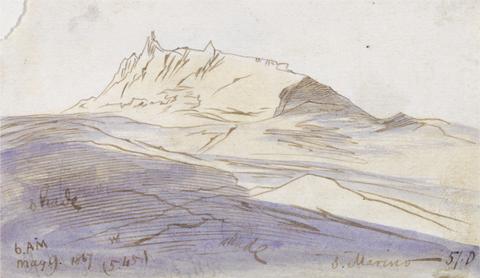
- Date:
- 1867
- Materials & Techniques:
- Watercolor, graphite, pen and brown ink on medium, slightly textured, cream wove paper
- Dimensions:
- Sheet: 2 13/16 x 4 13/16 inches (7.1 x 12.2 cm)
- Collection:
- Prints and Drawings
- Credit Line:
- Yale Center for British Art, Gift of Donald C. Gallup, Yale BA 1934, PhD 1939
2021. San Leo from San Marino
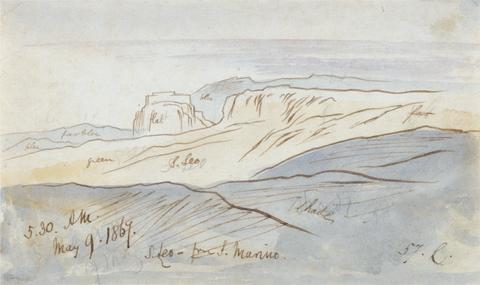
- Date:
- 1867
- Materials & Techniques:
- Watercolor, graphite, pen and brown ink on medium, slightly textured, cream wove paper
- Dimensions:
- Sheet: 2 13/16 x 4 3/4 inches (7.1 x 12.1 cm)
- Collection:
- Prints and Drawings
- Credit Line:
- Yale Center for British Art, Gift of Donald C. Gallup, Yale BA 1934, PhD 1939
2022. San Marino

- Date:
- 1867
- Materials & Techniques:
- Watercolor, graphite, white gouache, pen and brown ink on moderately thick, slightly textured, brown wove paper
- Dimensions:
- Sheet: 2 5/8 x 8 7/8 inches (6.7 x 22.5 cm)
- Collection:
- Prints and Drawings
- Credit Line:
- Yale Center for British Art, Gift of Donald C. Gallup, Yale BA 1934, PhD 1939
2023. Verrucchio

- Date:
- 1867
- Materials & Techniques:
- Watercolor, graphite, white gouache, pen and brown ink on moderately thick, slightly textured, brown wove paper
- Dimensions:
- Sheet: 2 5/8 x 9 1/16 inches (6.7 x 23 cm)
- Collection:
- Prints and Drawings
- Credit Line:
- Yale Center for British Art, Gift of Donald C. Gallup, Yale BA 1934, PhD 1939

- Date:
- 1867
- Materials & Techniques:
- Watercolor, graphite, white gouache, pen and brown ink on medium, slightly textured, blue wove paper
- Dimensions:
- Sheet: 3 x 9 1/16 inches (7.6 x 23 cm)
- Collection:
- Prints and Drawings
- Credit Line:
- Yale Center for British Art, Gift of Donald C. Gallup, Yale BA 1934, PhD 1939
2025. Lago di Garda

- Date:
- 1867
- Materials & Techniques:
- Watercolor, graphite, pen and brown ink on thick, rough, cream wove paper
- Dimensions:
- Sheet: 1 15/16 x 9 7/8 inches (4.9 x 25.1 cm)
- Collection:
- Prints and Drawings
- Credit Line:
- Yale Center for British Art, Gift of Donald C. Gallup, Yale BA 1934, PhD 1939
2026. Desenzano
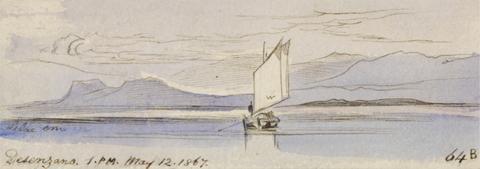
- Date:
- 1867
- Materials & Techniques:
- Watercolor, graphite, pen and brown ink on thick, rough, beige wove paper
- Dimensions:
- Sheet: 1 5/8 x 4 7/16 inches (4.1 x 11.3 cm)
- Collection:
- Prints and Drawings
- Credit Line:
- Yale Center for British Art, Gift of Donald C. Gallup, Yale BA 1934, PhD 1939
2027. Lago di Garda

- Date:
- 1867
- Materials & Techniques:
- Watercolor, graphite, pen and brown ink on medium, slightly textured, light blue wove paper
- Dimensions:
- Sheet: 1 15/16 x 9 inches (4.9 x 22.9 cm)
- Collection:
- Prints and Drawings
- Credit Line:
- Yale Center for British Art, Gift of Donald C. Gallup, Yale BA 1934, PhD 1939
2028. Near Salo, Maderno
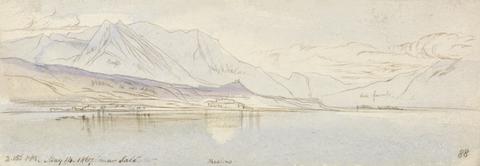
- Date:
- 1867
- Materials & Techniques:
- Watercolor, graphite, pen and brown ink on thick, rough, cream wove paper
- Dimensions:
- Sheet: 3 1/8 x 8 15/16 inches (7.9 x 22.7 cm)
- Collection:
- Prints and Drawings
- Credit Line:
- Yale Center for British Art, Gift of Donald C. Gallup, Yale BA 1934, PhD 1939
2029. Boats
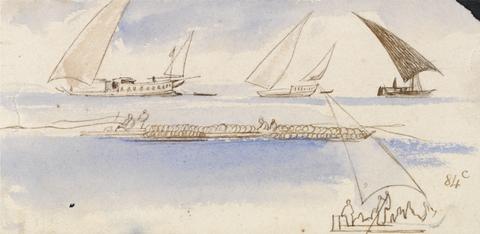
- Date:
- 1867
- Materials & Techniques:
- Watercolor, graphite, pen and brown ink on medium, slightly textured, beige wove paper
- Dimensions:
- Sheet: 2 11/16 x 5 1/2 inches (6.8 x 14 cm)
- Collection:
- Prints and Drawings
- Credit Line:
- Yale Center for British Art, Gift of Donald C. Gallup, Yale BA 1934, PhD 1939
2030. Lago d'Iseo
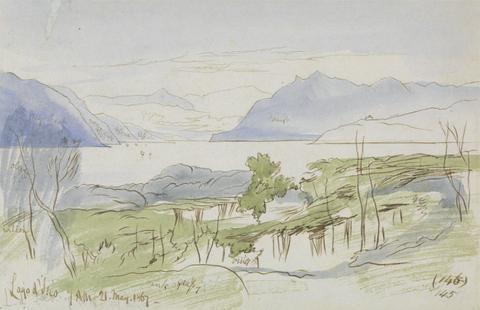
- Date:
- 1867
- Materials & Techniques:
- Watercolor, graphite, pen and brown ink on medium, slightly textured, light blue wove paper
- Dimensions:
- Sheet: 5 13/16 x 8 15/16 inches (14.8 x 22.7 cm)
- Collection:
- Prints and Drawings
- Credit Line:
- Yale Center for British Art, Gift of Donald C. Gallup, Yale BA 1934, PhD 1939
2031. Mt. Orfano
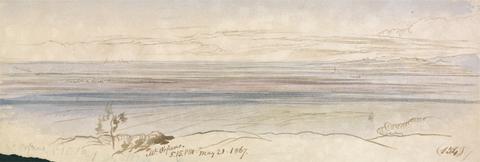
- Date:
- 1867
- Materials & Techniques:
- Watercolor, graphite, pen and brown ink on thick, moderately textured, beige wove paper
- Dimensions:
- Sheet: 3 7/16 x 10 1/8 inches (8.7 x 25.7 cm)
- Collection:
- Prints and Drawings
- Credit Line:
- Yale Center for British Art, Gift of Donald C. Gallup, Yale BA 1934, PhD 1939
2032. Lago di Como, Brienno?
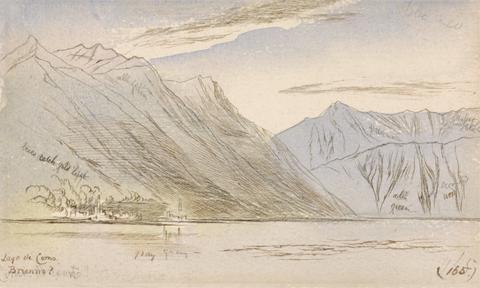
- Date:
- 1867
- Materials & Techniques:
- Watercolor, graphite, pen and brown ink on thick, rough, cream wove paper
- Dimensions:
- Sheet: 4 7/8 x 8 1/8 inches (12.4 x 20.6 cm)
- Collection:
- Prints and Drawings
- Credit Line:
- Yale Center for British Art, Gift of Donald C. Gallup, Yale BA 1934, PhD 1939
2033. Lago Maggiore...Stresa

- Date:
- 1867
- Materials & Techniques:
- Watercolor, graphite, pen and brown ink on thick, moderately textured, cream wove paper
- Dimensions:
- Sheet: 4 3/16 x 8 13/16 inches (10.6 x 22.4 cm)
- Collection:
- Prints and Drawings
- Credit Line:
- Yale Center for British Art, Gift of Donald C. Gallup, Yale BA 1934, PhD 1939
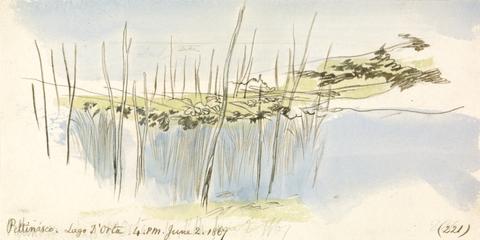
- Date:
- 1867
- Materials & Techniques:
- Watercolor with pen and brown ink over graphite on moderately thick, slightly textured, cream wove paper
- Dimensions:
- Sheet: 4 1/4 x 8 1/2 inches (10.8 x 21.6 cm)
- Collection:
- Prints and Drawings
- Credit Line:
- Yale Center for British Art, Gift of Donald C. Gallup, Yale BA 1934, PhD 1939
2035. Pettenasco, Lago d'Orta
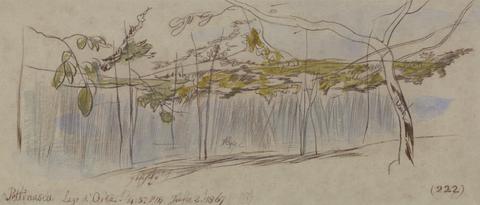
- Date:
- 1867
- Materials & Techniques:
- Watercolor, graphite, pen and brown ink on thick, slightly textured, blue wove paper
- Dimensions:
- Sheet: 3 11/16 x 8 9/16 inches (9.4 x 21.7 cm)
- Collection:
- Prints and Drawings
- Credit Line:
- Yale Center for British Art, Gift of Donald C. Gallup, Yale BA 1934, PhD 1939
2036. Pettenasco, Lago d'Orta
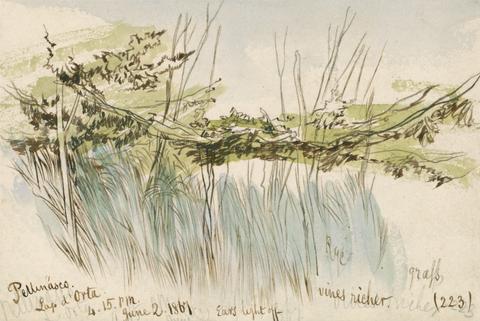
- Date:
- 1867
- Materials & Techniques:
- Watercolor, graphite, pen and brown ink on thick, slightly textured, cream wove paper
- Dimensions:
- Sheet: 4 1/4 x 6 5/16 inches (10.8 x 16 cm)
- Collection:
- Prints and Drawings
- Credit Line:
- Yale Center for British Art, Gift of Donald C. Gallup, Yale BA 1934, PhD 1939
2037. Brown's Parakeet
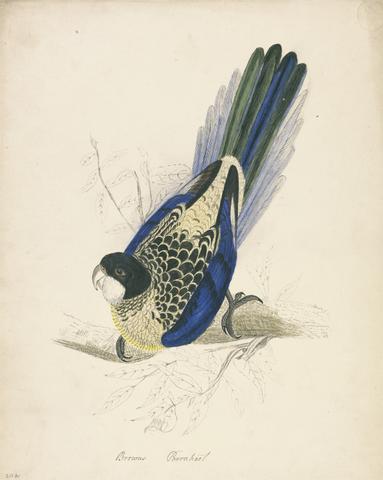
- Date:
- 1832
- Materials & Techniques:
- Watercolor, pen and black ink and graphite on beige board
- Dimensions:
- Sheet: 15 × 12 inches (38.1 × 30.5 cm)
- Collection:
- Prints and Drawings
- Credit Line:
- Yale Center for British Art, Gift of Donald C. Gallup, Yale BA 1934, PhD 1939
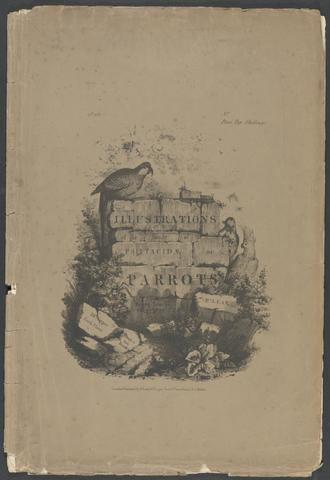
- Date:
- 1832
- Materials & Techniques:
- Lithograph
- Dimensions:
- Sheet: 22 1/4 x 15in. (56.5 x 38.1cm)
- Collection:
- Prints and Drawings
- Credit Line:
- Yale Center for British Art, Gift of Donald C. Gallup, Yale BA 1934, PhD 1939
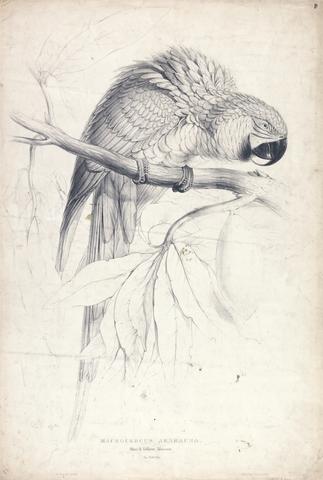
- Date:
- 1832
- Materials & Techniques:
- Lithograph printed in black ink (proof?)
- Dimensions:
- Sheet: 22 x 15in. (55.9 x 38.1cm)
- Collection:
- Prints and Drawings
- Credit Line:
- Yale Center for British Art, Gift of Donald C. Gallup, Yale BA 1934, PhD 1939
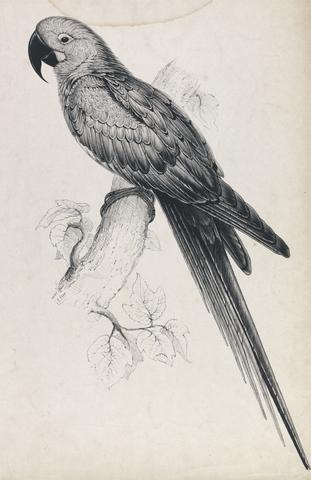
- Date:
- 1832
- Materials & Techniques:
- Lithograph with chine collé; proof on wove paper
- Dimensions:
- Sheet: 20 x 13 3/4in. (50.8 x 34.9cm)
- Collection:
- Prints and Drawings
- Credit Line:
- Yale Center for British Art, Gift of Donald C. Gallup, Yale BA 1934, PhD 1939
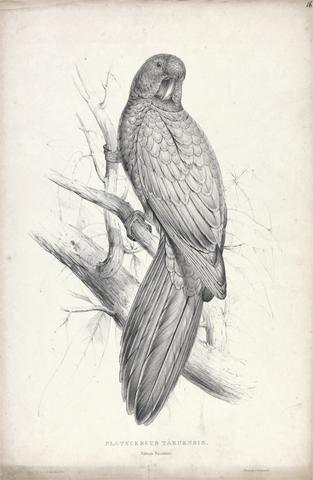
- Date:
- 1832
- Materials & Techniques:
- Lithograph (proof?) on wove paper
- Dimensions:
- Sheet: 22 x 15in. (55.9 x 38.1cm)
- Collection:
- Prints and Drawings
- Credit Line:
- Yale Center for British Art, Gift of Donald C. Gallup, Yale BA 1934, PhD 1939
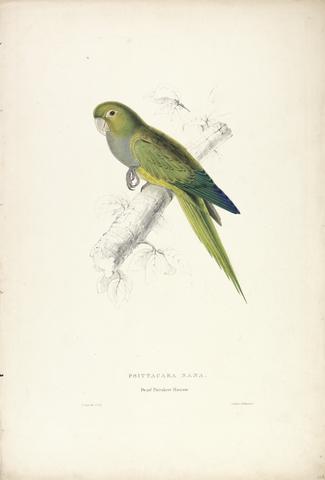
- Date:
- 1832
- Materials & Techniques:
- Hand colored lithograph on wove paper
- Dimensions:
- Sheet: 21 1/2 x 14 3/4in. (54.6 x 37.5cm)
- Collection:
- Prints and Drawings
- Credit Line:
- Yale Center for British Art, Gift of Donald C. Gallup, Yale BA 1934, PhD 1939
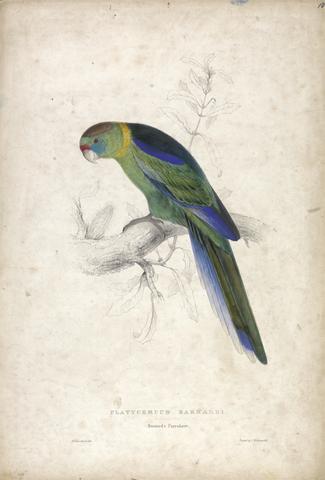
- Date:
- 1832
- Materials & Techniques:
- Hand-colored lithograph on wove paper
- Dimensions:
- Sheet: 22 x 15in. (55.9 x 38.1cm)
- Collection:
- Prints and Drawings
- Credit Line:
- Yale Center for British Art, Gift of Donald C. Gallup, Yale BA 1934, PhD 1939
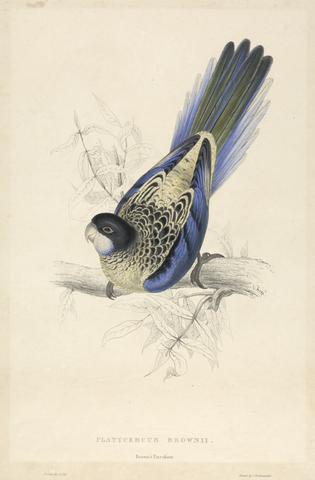
- Date:
- 1832
- Materials & Techniques:
- Hand-colored lithograph on wove paper
- Dimensions:
- Sheet: 20 1/4 x 13 3/8in. (51.4 x 34cm)
- Collection:
- Prints and Drawings
- Credit Line:
- Yale Center for British Art, Gift of Donald C. Gallup, Yale BA 1934, PhD 1939
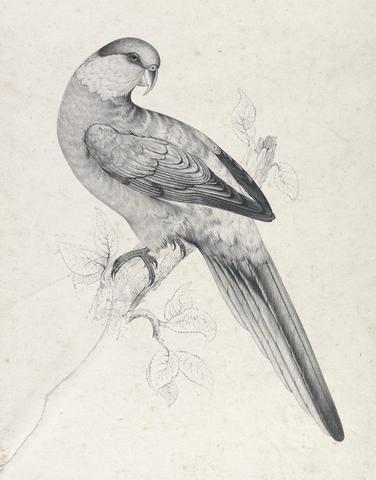
- Date:
- 1832
- Materials & Techniques:
- Lithograph with chine collé; proof
- Dimensions:
- Sheet: 21 1/2 x 15in. (54.6 x 38.1cm)
- Collection:
- Prints and Drawings
- Credit Line:
- Yale Center for British Art, Gift of Donald C. Gallup, Yale BA 1934, PhD 1939
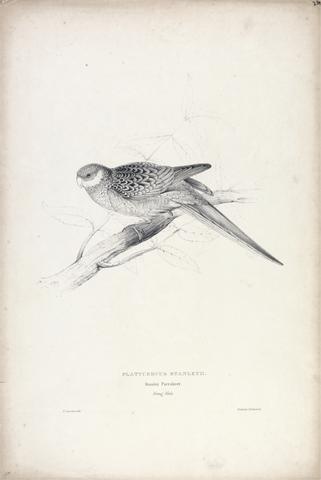
- Date:
- 1832
- Materials & Techniques:
- Lithograph (proof?) on wove paper
- Dimensions:
- Sheet: 22 x 15in. (55.9 x 38.1cm)
- Collection:
- Prints and Drawings
- Credit Line:
- Yale Center for British Art, Gift of Donald C. Gallup, Yale BA 1934, PhD 1939
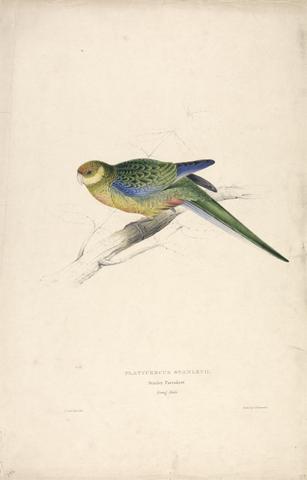
- Date:
- 1832
- Materials & Techniques:
- Hand-colored lithograph on wove paper
- Dimensions:
- Sheet: 22 x 14 3/4in. (55.9 x 37.5cm)
- Collection:
- Prints and Drawings
- Credit Line:
- Yale Center for British Art, Gift of Donald C. Gallup, Yale BA 1934, PhD 1939
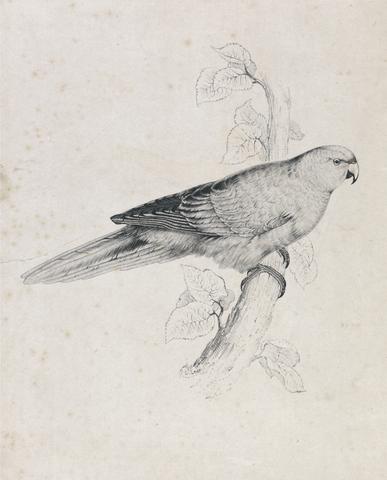
- Date:
- 1832
- Materials & Techniques:
- Lithograph with chine collé; proof
- Dimensions:
- Sheet: 19 1/4 x 14in. (48.9 x 35.6cm)
- Collection:
- Prints and Drawings
- Credit Line:
- Yale Center for British Art, Gift of Donald C. Gallup, Yale BA 1934, PhD 1939
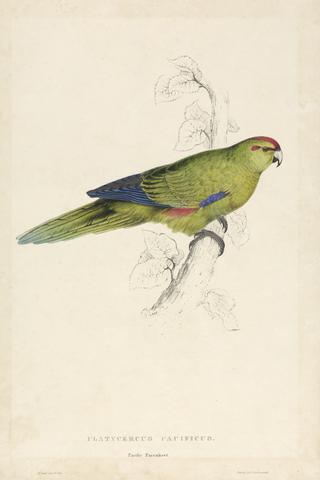
- Date:
- 1832
- Materials & Techniques:
- Hand-colored lithograph on wove paper
- Dimensions:
- Sheet: 20 1/2 x 13 5/8in. (52.1 x 34.6cm)
- Collection:
- Prints and Drawings
- Credit Line:
- Yale Center for British Art, Gift of Donald C. Gallup, Yale BA 1934, PhD 1939
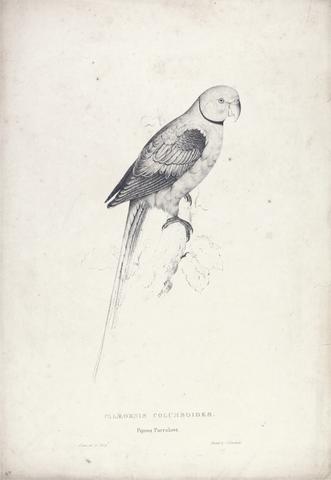
- Date:
- 1832
- Materials & Techniques:
- Lithograph (proof?) on wove paper
- Dimensions:
- Sheet: 22 x 15in. (55.9 x 38.1cm)
- Collection:
- Prints and Drawings
- Credit Line:
- Yale Center for British Art, Gift of Donald C. Gallup, Yale BA 1934, PhD 1939
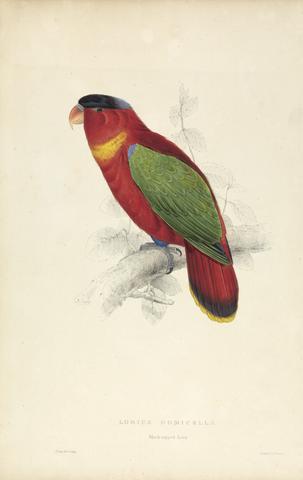
- Date:
- 1832
- Materials & Techniques:
- Hand-colored lithograph on wove paper
- Dimensions:
- Sheet: 20 1/2 x 13in. (52.1 x 33cm)
- Collection:
- Prints and Drawings
- Credit Line:
- Yale Center for British Art, Gift of Donald C. Gallup, Yale BA 1934, PhD 1939
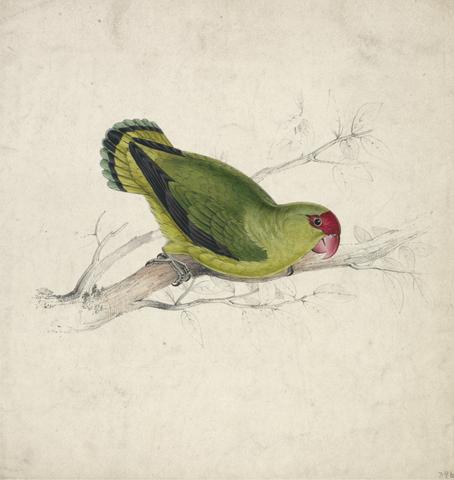
- Date:
- 1832
- Materials & Techniques:
- Hand-colored lithograph on wove paper
- Dimensions:
- Sheet: 11 x 11in. (27.9 x 27.9cm)
- Collection:
- Prints and Drawings
- Credit Line:
- Yale Center for British Art, Gift of Donald C. Gallup, Yale BA 1934, PhD 1939
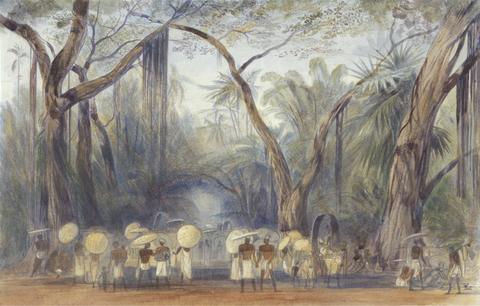
- Date:
- undated
- Materials & Techniques:
- Watercolor, gouache, and gum arabic on medium, moderately textured, cream wove paper
- Dimensions:
- Sheet: 10 × 15 9/16 inches (25.4 × 39.5 cm)
- Collection:
- Prints and Drawings
- Credit Line:
- Yale Center for British Art, Paul Mellon Collection

- Date:
- 1832
- Materials & Techniques:
- Hand-colored lithograph printed in black, plate trimmed
- Dimensions:
- Sheet: 16 x 11 1/2in. (40.6 x 29.2cm)
- Collection:
- Prints and Drawings
- Credit Line:
- Yale Center for British Art, Gift of Donald C. Gallup, Yale BA 1934, PhD 1939
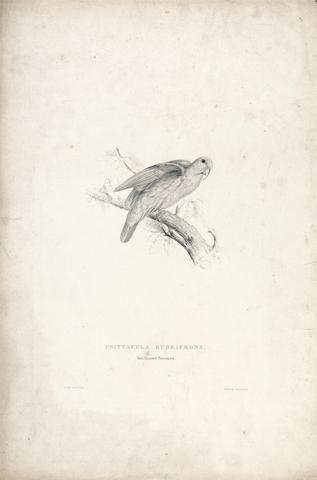
- Date:
- 1832
- Materials & Techniques:
- Lithograph printed in black ink (proof?)
- Dimensions:
- Sheet: 22 x 15in. (55.9 x 38.1cm)
- Collection:
- Prints and Drawings
- Credit Line:
- Yale Center for British Art, Gift of Donald C. Gallup, Yale BA 1934, PhD 1939
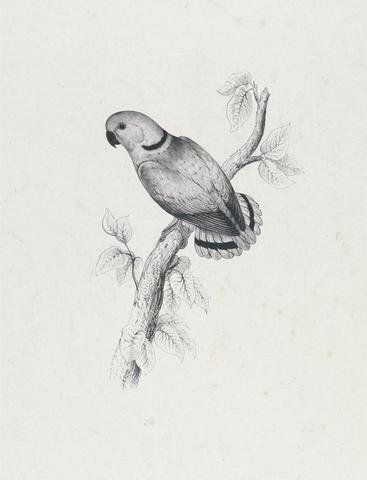
- Date:
- 1832
- Materials & Techniques:
- Lithograph with chine collé; proof
- Dimensions:
- Sheet: 13 1/2 x 10 1/2in. (34.3 x 26.7cm)
- Collection:
- Prints and Drawings
- Credit Line:
- Yale Center for British Art, Gift of Donald C. Gallup, Yale BA 1934, PhD 1939
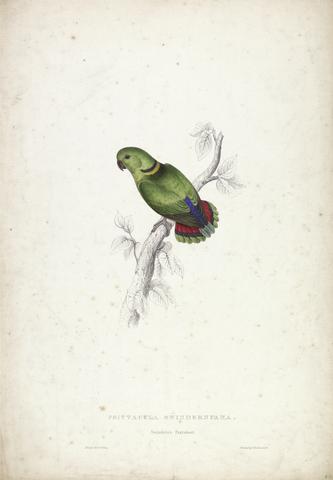
- Date:
- 1832
- Materials & Techniques:
- hand-colored lithograph printed in black ink
- Dimensions:
- Sheet: 20 3/4 x 14 5/8 inches (52.7 x 37.1 cm)
- Collection:
- Prints and Drawings
- Credit Line:
- Yale Center for British Art, Gift of Donald C. Gallup, Yale BA 1934, PhD 1939

- Date:
- 1841
- Materials & Techniques:
- Lithograph on wove paper
- Dimensions:
- Plate: 9 1/2 × 14 15/16 inches (24.1 × 37.9 cm)
- Collection:
- Prints and Drawings
- Credit Line:
- Yale Center for British Art, Gift of Donald C. Gallup, Yale BA 1934, PhD 1939

- Date:
- 1841
- Materials & Techniques:
- Lithograph on wove paper
- Dimensions:
- Plate: 9 15/16 x 15 15/16in. (25.2 x 40.5cm)
- Collection:
- Prints and Drawings
- Credit Line:
- Yale Center for British Art, Gift of Donald C. Gallup, Yale BA 1934, PhD 1939
2060. Cervara
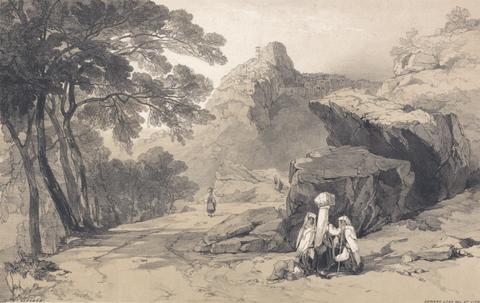
- Date:
- 1832
- Materials & Techniques:
- Lithograph on wove paper
- Dimensions:
- Plate: 9 3/4 x 14 15/16in. (24.8 x 37.9cm)
- Collection:
- Prints and Drawings
- Credit Line:
- Yale Center for British Art, Gift of Donald C. Gallup, Yale BA 1934, PhD 1939
2061. Rome from Monte Pincio
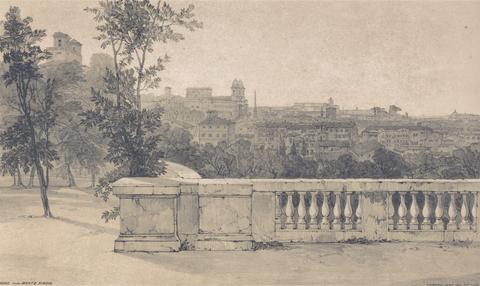
- Date:
- 1832
- Materials & Techniques:
- Lithograph on wove paper
- Dimensions:
- Plate: 9 3/4 x 16 1/2in. (24.8 x 41.9cm)
- Collection:
- Prints and Drawings
- Credit Line:
- Yale Center for British Art, Gift of Donald C. Gallup, Yale BA 1934, PhD 1939
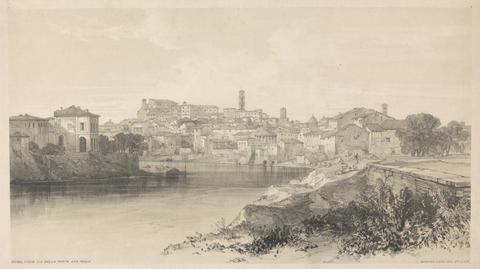
- Date:
- 1841
- Materials & Techniques:
- Lithograph on wove paper
- Dimensions:
- Plate: 9 3/8 x 16 15/16in. (23.8 x 43cm)
- Collection:
- Prints and Drawings
- Credit Line:
- Yale Center for British Art, Gift of Donald C. Gallup, Yale BA 1934, PhD 1939

- Date:
- 1845 to 1846
- Materials & Techniques:
- Graphite and white gouache on medium, slightly textured, gray-green wove paper
- Dimensions:
- Sheet: 7 3/8 × 10 5/8 inches (18.7 × 27 cm)
- Collection:
- Prints and Drawings
- Credit Line:
- Yale Center for British Art, Paul Mellon Collection

- Date:
- ca. 1844
- Materials & Techniques:
- Graphite on moderately thick, moderately textured, blue wove paper
- Dimensions:
- Sheet: 5 1/4 x 9 11/16 inches (13.3 x 24.6 cm)
- Collection:
- Prints and Drawings
- Credit Line:
- Yale Center for British Art, Gift of George E. Dix, Yale BA 1934, MA 1942
2065. Villa d'Este
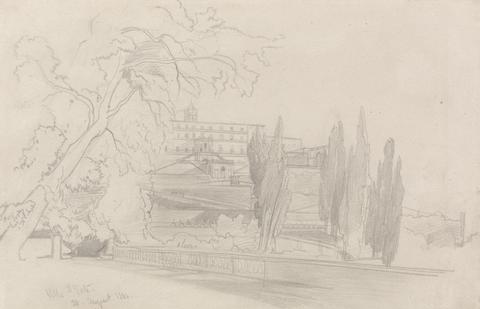
- Date:
- 1866
- Materials & Techniques:
- Graphite on moderately thick, slightly textured, gray wove paper
- Dimensions:
- Sheet: 6 7/8 x 10 11/16 inches (17.5 x 27.1 cm)
- Collection:
- Prints and Drawings
- Credit Line:
- Yale Center for British Art, Gift of George E. Dix, Yale BA 1934, MA 1942
2066. Views of Sicily
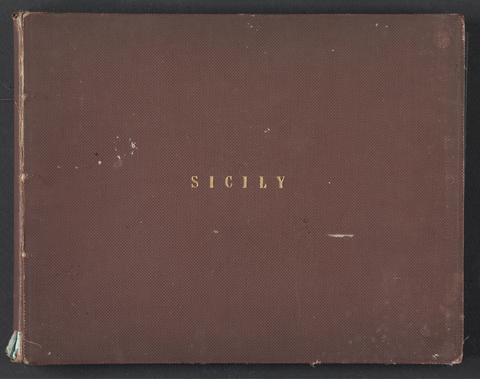
- Materials & Techniques:
- Various media, including: black pencil or chalk with some white chalk on blue paper; gouache; some squared
- Dimensions:
- Sheet: 9 1/4 x 11 3/4in. (23.5 x 29.8cm)
- Collection:
- Prints and Drawings
- Credit Line:
- Yale Center for British Art, Paul Mellon Collection
2067. Landscape Near Segni
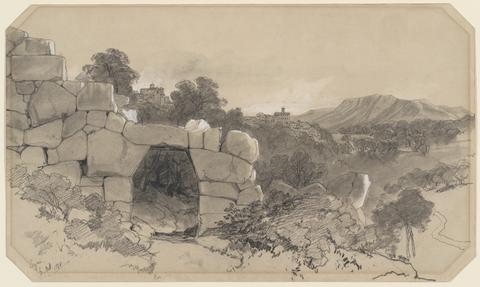
- Date:
- 1838
- Materials & Techniques:
- Black chalk, graphite, watercolor, and white gouache on medium, slightly textured, beige wove paper
- Dimensions:
- Sheet: 10 1/2 × 17 3/4 inches (26.7 × 45.1 cm)
- Collection:
- Prints and Drawings
- Credit Line:
- Yale Center for British Art, Gift of Lois Severini and Enrique Foster Gittes, Yale BA 1961
2068. A View of Cannes
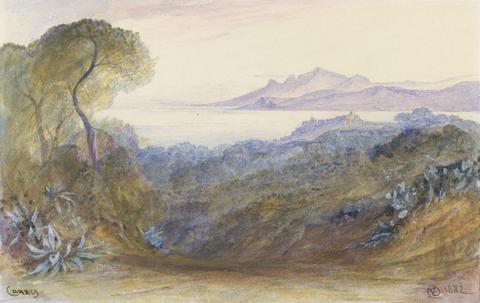
- Date:
- 1882
- Materials & Techniques:
- Watercolor, gouache, and gum arabic on moderately thick, slightly textured, cream wove paper
- Dimensions:
- Sheet: 6 1/2 × 10 3/8 inches (16.5 × 26.4 cm)
- Collection:
- Prints and Drawings
- Credit Line:
- Yale Center for British Art, Gift of Paul Lubetkin
2069. London from Greenwich

- Date:
- 1811
- Materials & Techniques:
- Etching and mezzotint, printed in brown ink on medium, slightly textured, cream wove paper
- Dimensions:
- Sheet: 10 1/2 × 14 3/8 inches (26.7 × 36.5 cm)
- Collection:
- Prints and Drawings
- Credit Line:
- Yale Center for British Art, Paul Mellon Fund

- Collection:
- Prints and Drawings
- Credit Line:
- Yale Center for British Art, Paul Mellon Collection

- Collection:
- Prints and Drawings
- Credit Line:
- Yale Center for British Art, Paul Mellon Collection

- Collection:
- Prints and Drawings
- Credit Line:
- Yale Center for British Art, Paul Mellon Collection

- Collection:
- Prints and Drawings
- Credit Line:
- Yale Center for British Art, Paul Mellon Collection
2074. Figure Study 1

- Date:
- early 1790s
- Materials & Techniques:
- Graphite on medium, slightly textured, cream laid paper
- Dimensions:
- Sheet: 4 x 1 3/4 inches (10.2 x 4.4 cm)
- Collection:
- Prints and Drawings
- Credit Line:
- Yale Center for British Art, Paul Mellon Fund
2075. Figure Study 7
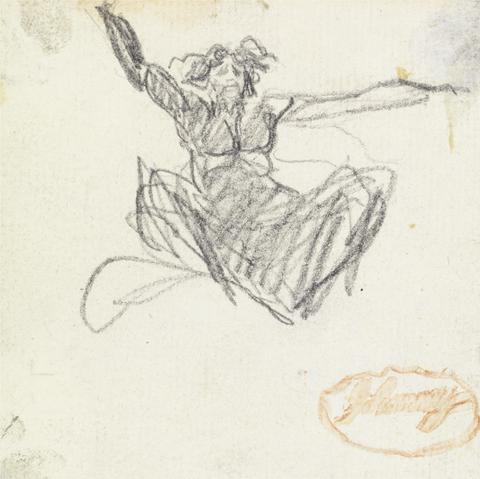
- Date:
- mid-1790s
- Materials & Techniques:
- Graphite on medium, slightly textured, cream laid paper
- Dimensions:
- Sheet: 3 1/4 x 3 3/8 inches (8.3 x 8.6 cm)
- Collection:
- Prints and Drawings
- Credit Line:
- Yale Center for British Art, Paul Mellon Fund

- Date:
- early 1770s
- Materials & Techniques:
- Graphite on medium, slightly textured, cream laid paper
- Dimensions:
- Sheet: 5 1/2 x 3 1/2 inches (14 x 8.9 cm)
- Collection:
- Prints and Drawings
- Credit Line:
- Yale Center for British Art, Paul Mellon Fund
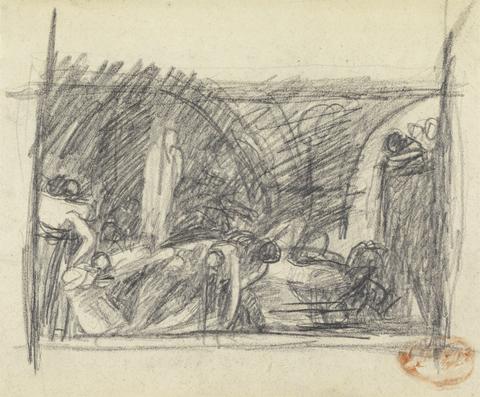
- Date:
- 1793-1794
- Materials & Techniques:
- Graphite on medium, slightly textured, cream wove paper
- Dimensions:
- Sheet: 5 1/2 x 6 5/8 inches (14 x 16.8 cm)
- Collection:
- Prints and Drawings
- Credit Line:
- Yale Center for British Art, Paul Mellon Fund
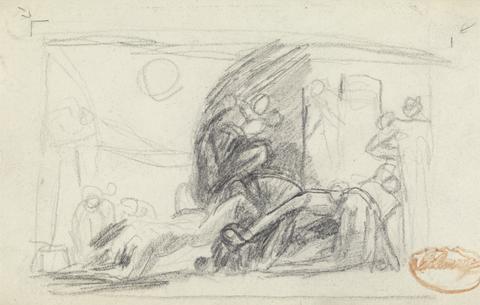
- Date:
- 1793
- Materials & Techniques:
- Graphite on medium, slightly textured, cream wove paper
- Dimensions:
- Sheet: 4 1/2 x 6 3/4 inches (11.4 x 17.1 cm)
- Collection:
- Prints and Drawings
- Credit Line:
- Yale Center for British Art, Paul Mellon Fund
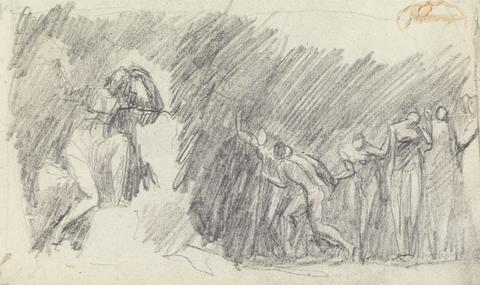
- Date:
- mid-1790s
- Materials & Techniques:
- Graphite on medium, slightly textured, cream wove paper
- Dimensions:
- Sheet: 4 1/4 x 7 1/8 inches (10.8 x 18.1 cm)
- Collection:
- Prints and Drawings
- Credit Line:
- Yale Center for British Art, Paul Mellon Fund
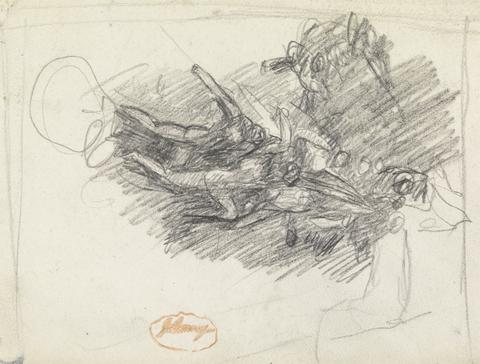
- Date:
- 1795-1796
- Materials & Techniques:
- Graphite on medium, slightly textured, cream wove paper
- Dimensions:
- Sheet: 7 1/4 x 5 1/2 inches (18.4 x 14 cm)
- Collection:
- Prints and Drawings
- Credit Line:
- Yale Center for British Art, Paul Mellon Fund
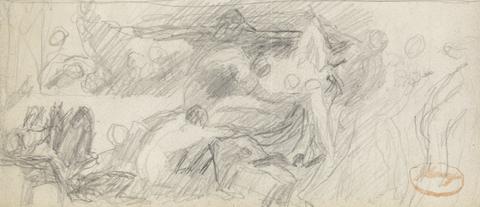
- Date:
- undated
- Materials & Techniques:
- Graphite on medium, slightly textured, cream wove paper
- Dimensions:
- Sheet: 4 x 9 inches (10.2 x 22.9 cm)
- Collection:
- Prints and Drawings
- Credit Line:
- Yale Center for British Art, Paul Mellon Fund
2082. Leaves 1
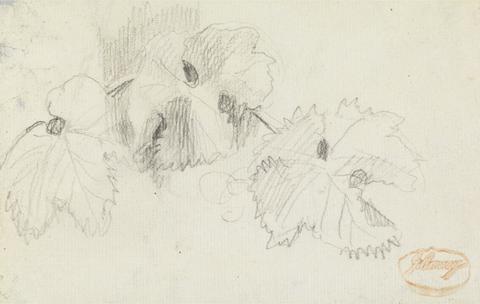
- Date:
- undated
- Materials & Techniques:
- Graphite on medium, slightly textured, cream laid paper
- Dimensions:
- Sheet: 4 3/8 x 6 3/4 inches (11.1 x 17.1 cm)
- Collection:
- Prints and Drawings
- Credit Line:
- Yale Center for British Art, Paul Mellon Fund
2083. Study of a Cow
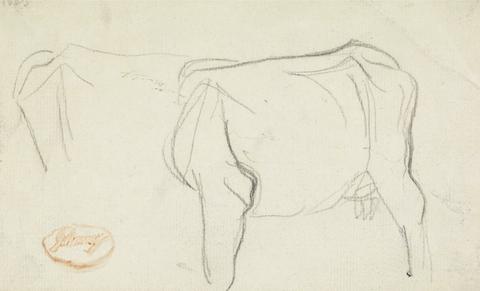
- Date:
- undated
- Materials & Techniques:
- Graphite on medium, slightly textured, cream laid paper
- Dimensions:
- Sheet: 4 3/8 x 7 inches (11.1 x 17.8 cm)
- Collection:
- Prints and Drawings
- Credit Line:
- Yale Center for British Art, Paul Mellon Fund

- Date:
- undated
- Materials & Techniques:
- Graphite on medium, slightly textured, cream laid paper
- Dimensions:
- Sheet: 5 x 7 inches (12.7 x 17.8 cm)
- Collection:
- Prints and Drawings
- Credit Line:
- Yale Center for British Art, Paul Mellon Fund
2085. Figure Study 3
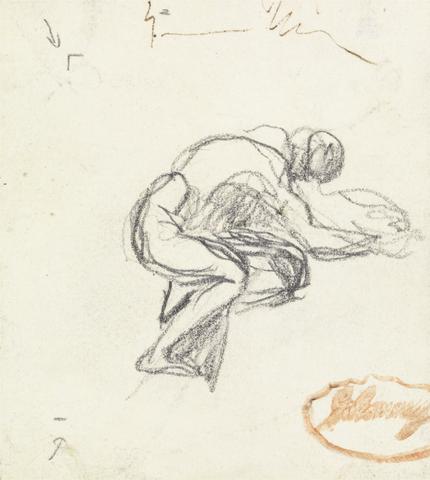
- Date:
- early 1790s
- Materials & Techniques:
- Graphite on medium, slightly textured, cream wove paper
- Dimensions:
- Sheet: 3 1/2 x 3 1/8 inches (8.9 x 7.9 cm)
- Collection:
- Prints and Drawings
- Credit Line:
- Yale Center for British Art, Paul Mellon Fund
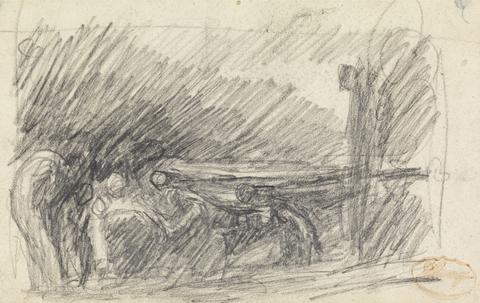
- Date:
- undated
- Materials & Techniques:
- Graphite on medium, slightly textured, cream wove paper
- Dimensions:
- Sheet: 4 3/4 x 7 3/4 inches (12.1 x 19.7 cm)
- Collection:
- Prints and Drawings
- Credit Line:
- Yale Center for British Art, Paul Mellon Fund
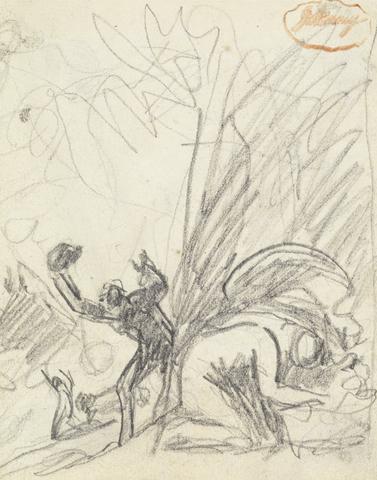
- Date:
- undated
- Materials & Techniques:
- Graphite on medium, slightly textured, cream wove paper
- Dimensions:
- Sheet: 5 1/2 x 4 1/2 inches (14 x 11.4 cm)
- Collection:
- Prints and Drawings
- Credit Line:
- Yale Center for British Art, Paul Mellon Fund
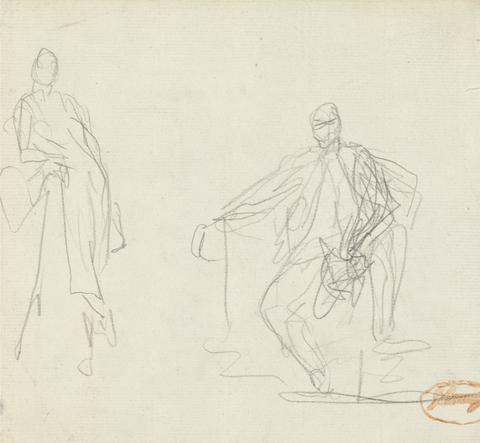
- Date:
- undated
- Materials & Techniques:
- Graphite on medium, slightly textured, cream laid paper
- Dimensions:
- Sheet: 6 x 6 5/8 inches (15.2 x 16.8 cm)
- Collection:
- Prints and Drawings
- Credit Line:
- Yale Center for British Art, Paul Mellon Fund
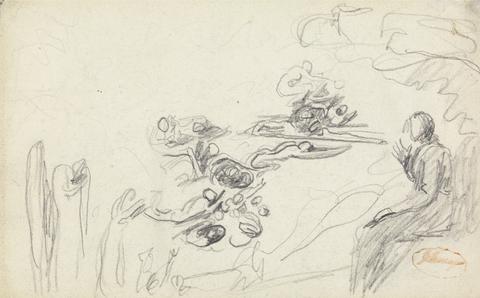
- Date:
- undated
- Materials & Techniques:
- Graphite on medium, slightly textured, cream wove paper
- Dimensions:
- Sheet: 5 1/2 x 9 inches (14 x 22.9 cm)
- Collection:
- Prints and Drawings
- Credit Line:
- Yale Center for British Art, Paul Mellon Fund
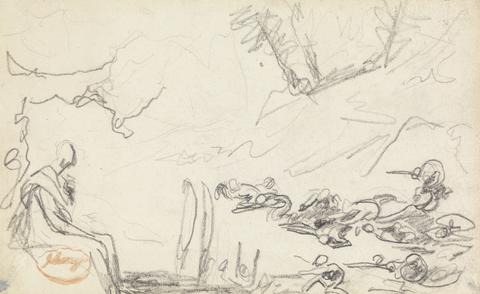
- Date:
- undated
- Materials & Techniques:
- Graphite on medium, slightly textured, cream wove paper
- Dimensions:
- Sheet: 5 1/2 x 9 inches (14 x 22.9 cm)
- Collection:
- Prints and Drawings
- Credit Line:
- Yale Center for British Art, Paul Mellon Fund

- Date:
- undated
- Materials & Techniques:
- Graphite on medium, slightly textured, cream wove paper
- Dimensions:
- Sheet: 5 1/2 x 7 1/2 inches (14 x 19.1 cm)
- Collection:
- Prints and Drawings
- Credit Line:
- Yale Center for British Art, Paul Mellon Fund
2092. Study of Leaves 2
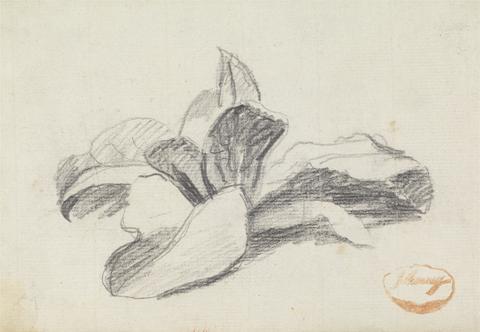
- Date:
- undated
- Materials & Techniques:
- Graphite on medium, slightly textured, cream laid paper
- Dimensions:
- Sheet: 4 3/4 x 7 inches (12.1 x 17.8 cm)
- Collection:
- Prints and Drawings
- Credit Line:
- Yale Center for British Art, Paul Mellon Fund
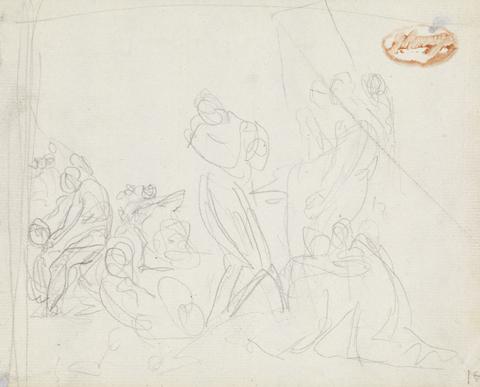
- Date:
- undated
- Materials & Techniques:
- Graphite on medium, slightly textured, cream laid paper
- Dimensions:
- Sheet: 5 5/8 x 7 inches (14.3 x 17.8 cm)
- Collection:
- Prints and Drawings
- Credit Line:
- Yale Center for British Art, Paul Mellon Fund
2094. Study of Three Women
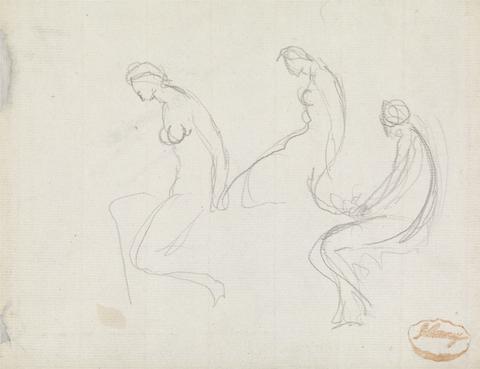
- Date:
- undated
- Materials & Techniques:
- Graphite on medium, slightly textured, cream laid paper
- Dimensions:
- Sheet: 6 1/8 x 7 7/8 inches (15.6 x 20 cm)
- Collection:
- Prints and Drawings
- Credit Line:
- Yale Center for British Art, Paul Mellon Fund
2095. Study of a Male Figure
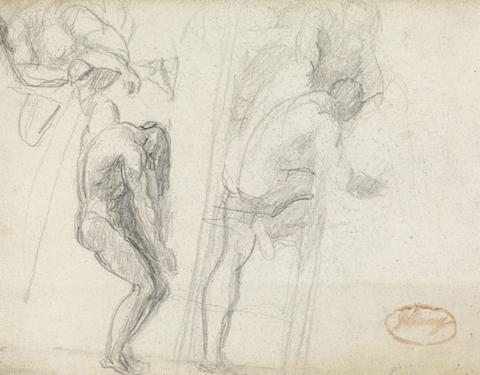
- Date:
- undated
- Materials & Techniques:
- Graphite on medium, slightly textured, cream wove paper
- Dimensions:
- Sheet: 5 1/2 x 7 inches (14 x 17.8 cm)
- Collection:
- Prints and Drawings
- Credit Line:
- Yale Center for British Art, Paul Mellon Fund
2096. Male Head 2
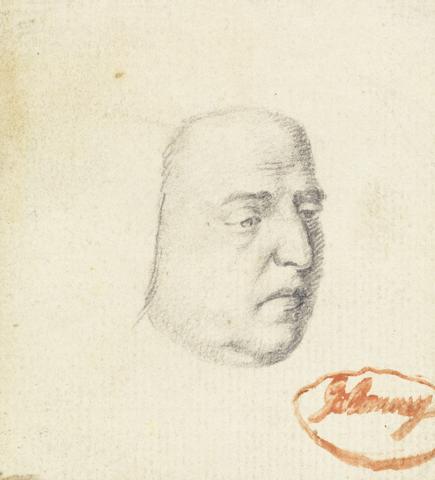
- Date:
- mid-1750s
- Materials & Techniques:
- Graphite on medium, slightly textured, cream laid paper
- Dimensions:
- Sheet: 3 x 2 7/8 inches (7.6 x 7.3 cm)
- Collection:
- Prints and Drawings
- Credit Line:
- Yale Center for British Art, Paul Mellon Fund
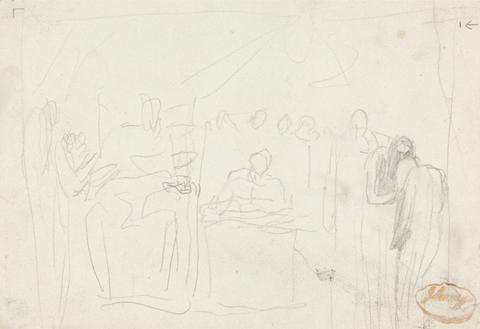
- Date:
- undated
- Materials & Techniques:
- Graphite on medium, slightly textured, cream wove paper
- Dimensions:
- Sheet: 5 7/8 x 8 inches (14.9 x 20.3 cm)
- Collection:
- Prints and Drawings
- Credit Line:
- Yale Center for British Art, Paul Mellon Fund

- Date:
- undated
- Materials & Techniques:
- Graphite on medium, slightly textured, cream laid paper
- Dimensions:
- Sheet: 4 5/8 x 7 3/8 inches (11.7 x 18.7 cm)
- Collection:
- Prints and Drawings
- Credit Line:
- Yale Center for British Art, Paul Mellon Fund

- Date:
- undated
- Materials & Techniques:
- Graphite on medium, slightly textured, cream laid paper
- Dimensions:
- Sheet: 6 x 7 3/4 inches (15.2 x 19.7 cm)
- Collection:
- Prints and Drawings
- Credit Line:
- Yale Center for British Art, Paul Mellon Fund
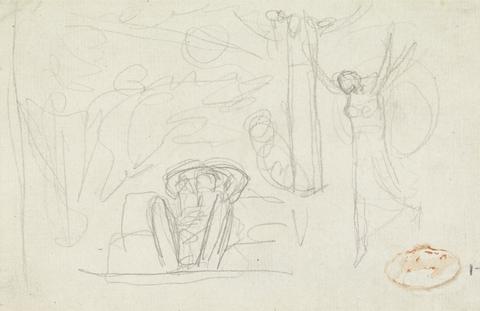
- Date:
- undated
- Materials & Techniques:
- Graphite on medium, slightly textured, cream laid paper
- Dimensions:
- Sheet: 4 1/2 x 6 5/8 inches (11.4 x 16.8 cm)
- Collection:
- Prints and Drawings
- Credit Line:
- Yale Center for British Art, Paul Mellon Fund